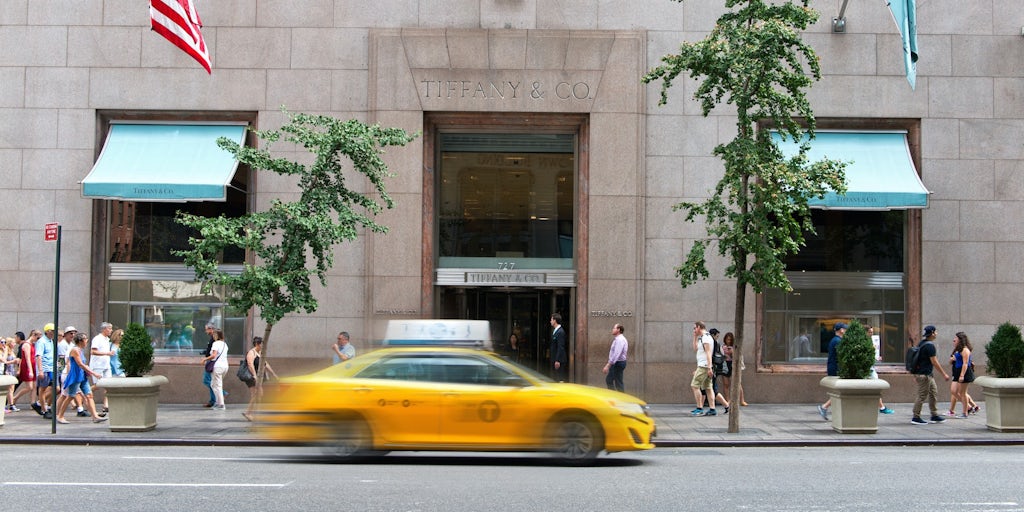Three Italian Swimwear Brands to Know Before the Summer 2021 Holidays – WWD
MILAN — Amid a highly polarized market dominated by established names, Italian up-and-coming beachwear brands are leveraging a start-up mind-set and catching the business opportunities offered by the direct-to-consumer business model.
They are rapidly redefining the segment’s landscape, banking on eco-friendly production, affordable price ranges and a value of inclusivity and body positivity that is key for today’s customers.
Here WWD sat down with the entrepreneurs behind three hot swimwear brands.
At the Forefront of Sustainability: Seay
For brands that build their success offering beach-ready gear, it should be a given that they also care for the oceans and the sea — but that’s not always the case.
Alberto Bressan, a former Guess director for the underwear business, during his trips between Europe and Los Angeles and after his former employer laid him off in 2019, gathered several testimonies from water sports athletes complaining about ocean pollution. He sensed the time was ripe for an independent project and soon called on board Simone Scodellaro, also formerly at Guess, as cofounder and chief commercial officer.
“There was a lack of sustainable brands in the beachwear arena and people that spend a lot of time navigating the sea do know what’s going on there,” said Bressan. The company has tapped wakeboard champions and twins Alice and Chiara Virag as its ambassadors.
“Our goal was to upturn the consolidated manufacturing process, with beachwear being shipped back and forth over 10,000 kilometers and thus producing at least 87 tons of carbon dioxide,” he explained.

Seay swimwear.
Michele Borboni/Courtesy of Seay
To this end, the brand installed 95 percent of its manufacturing processes in the Veneto region and within 100 kilometers from the headquarters. They employ Oeko-Tex Standard 100 fabrics, including GRS-approved polyester and polyamide, the former coming from upcycled PET bottles, and GOTS organic cotton. They have also transitioned its packaging to compostable and biodegradable alternatives and applied to shipping carrier DHL’s Go Green program ensuring that released CO2 is offset by the planting of new trees.
“This was not enough,” said Bressan, “the real burden is the products’ lifecycle, and the amount of clothing destined each year to the landfills.” Thus, Seay came up with a dedicated traceable program to help solve this issue.
Called Re3 which stands for reuse, resell and regenerate, the send-back initiative offers an incentive to Seay customers to continue shopping with the brand while also doing good for the planet. After each purchase shoppers are encouraged to send back to the company one or more of their used and damaged clothing items — from any brand and in all conditions — in exchange for a 20 percent discount.
When the company receives the used clothing a team of experts based in Vicenza, Italy, sorts them and sends them either to thrift stores for resale, donates them to underprivileged people, or ships them to a Trento-based manufacturer which converts them into upcycled textiles. As of mid-2021, 80 percent of Seay’s customers had embraced the Re3 program versus 52 percent in 2020, triggered by the possibility of following the journey of the discarded clothing via a blockchain-based QR-code.
“There are many customers who don’t even want the 20 percent discount, they are just participating for the sake of it, understanding the importance of this initiative,” Bressan explained.
Seay was recognized as a Benefit Company in 2020, which by Italian law is bestowed on businesses that aim to generate a positive impact on society, workers, the community and the environment and has applied for the B Corp certification. “Although our business model as it is has a strong impact on profitability, if you launch a brand today there’s no other way to do it,” Bressan said.
The company, which in 2020 had sales of 100,000 euros and is aiming to triple its revenues this year, has already attracted the interest of international investors including Singapore-based venture capital firm Hatcher+, which secured a 165,000 euros funding along with other investors; Italy’s Cassa Depositi e Prestiti, a company controlled by the Ministry of Economy and Finance, which injected 200,000 euros through a convertible bond; and Fashion Technology Acceleration which owns 5 percent of the business.
Seay is now looking for fresh money to support growth and aims to close a new round of investments in the fourth quarter of the year to collect 500,000 euros.
High-Tech Innovation with a Sustainable Bent: Safe
Sometimes intuition is the most effective business asset. That was true for Stefano Sacchi who, during a trip to Indonesia in 2014, realized how he and his circle of friends were losing things that dropped out of the pockets of their swimming trunks.
He came to the rescue, pivoting his career in real estate to launch Safe, a men’s swimwear brand that has patented the zippered pockets, a first for the sector. “I never thought about fashion as a real business opportunity,” Sacchi said. “I did my research and noticed that nobody had ever thought about such a simple yet useful innovation,” he added.
The first collections featured YKK water repellent zippers, which are still used. However, as the brand’s name suggests, the primary goal was to provide a fully waterproof pocket, which came to fruition in 2021 and was patented by the European Patent Office.
For this new iteration, in addition to the water-resistant zippers, Safe’s swimming trunks — crafted from eco-friendly materials including upcycled polyester and spandex — feature an inside pocket made of TPU, a fully biodegradable material, with a magnetic closure that guarantees impermeability up to 90 feet.

Swimming trunks by Safe.
Courtesy of Safe
“At the very beginning the market didn’t seem to consider this innovation as a key element, probably because the brand was not as recognized as it is today. We had to invest in marketing to build brand awareness and then customers kept returning,” Sacchi explained.
Although the brand was launched with a more traditional business model in mind, leveraging a wide network of distributors, it made a strong pivot to direct-to-consumer in 2019 to dodge the complexity of the wholesale business — especially in Italy — despite a sell-out rate close to 72 percent in the first seasons.
It currently generates 90 percent of its turnover, which in 2020 was north of 150,000 euros, online while the remaining 10 percent is based on wholesale and concessions in key resort destinations. The brand operates corners at the Twiga Beach Club in Forte dei Marmi, Italy, and at the hotel Le Mandala in Saint Tropez, France, and it is sold at Wonderland in Capri, as well as Nikki Beach in Dubai.
Aiming to capitalize on exposure in the Americas and the Middle East, Safe has forged ties with an international distributor which boasts showrooms in New York and Dubai and 3,000 points of sale. This would mark the first big expansion outside Europe, except for Japan where the brand had already built a reputation in the 2017-to-2019 period thanks to a local distributor.
Up next is the launch of a women’s range and the expansion of the lifestyle offering of shirts, polos and T-shirts to complement its core category with clothing for “wild travelers.”
Body Positivity Shines Bright: After Glow
Women’s beachwear brand After Glow seems to have born for social media with its Instagram-friendly saturated images and nods to influencers’ lifestyle.
However, there’s more to the brand established earlier this year by friends Bianca Bettazzi and Jessica Bocchicchio, both with backgrounds in fashion, in manufacturing and retail, respectively. A quick scroll through the brand’s Instagram feed reveals a penchant for body positivity and self-love that’s in sync with the values of the Gen Z customers that the brand aims to target.
“Diversity is at the core of the brand. It aims to telegraph a positive way of living and perceiving our bodies, appreciating our flaws,” said Bettazzi.
The brand is entirely made in Italy — a trait that the duo is particularly proud of and wants to celebrate and preserve. “We decided to offer a product that is slightly more expensive, but which can guarantee high quality and more satisfaction,” said Bocchicchio.
Not only is the brand’s name inspired by the relaxed atmosphere one enjoys on the beach at sunset, After Glow’s swimwear also nods to the saturated colors at dusk and serves as a mood booster. “They are the expression of joy after confinement,” explained Bettazzi. Cue halter neck bikinis in lime green and fuchsia or swimsuits in tangerine orange.

After Glow swimwear.
Courtesy of After Glow
While acknowledging that the launch of the brand during the pandemic could sound counterintuitive, the duo said it felt the right time and injected a sense of hope, which they expect to transfer to their customers.
The brand started out leveraging Instagram via an influencer marketing campaign, which paid back. “We experienced a surge in web traffic whenever an Influencer would post our swimsuits,” said Bettazzi.
Born as a direct-to-consumer brand, it has already gained the interest of some local retailers from Tuscany.
SEE ALSO:
Scaled-back SwimShow, Cabana Exhibitions See Strong Demand
Kate Moss Wears Kim Kardashian West’s Underwear
Sustainable Performance Fiber Solution Attracts Swimwear Brands





